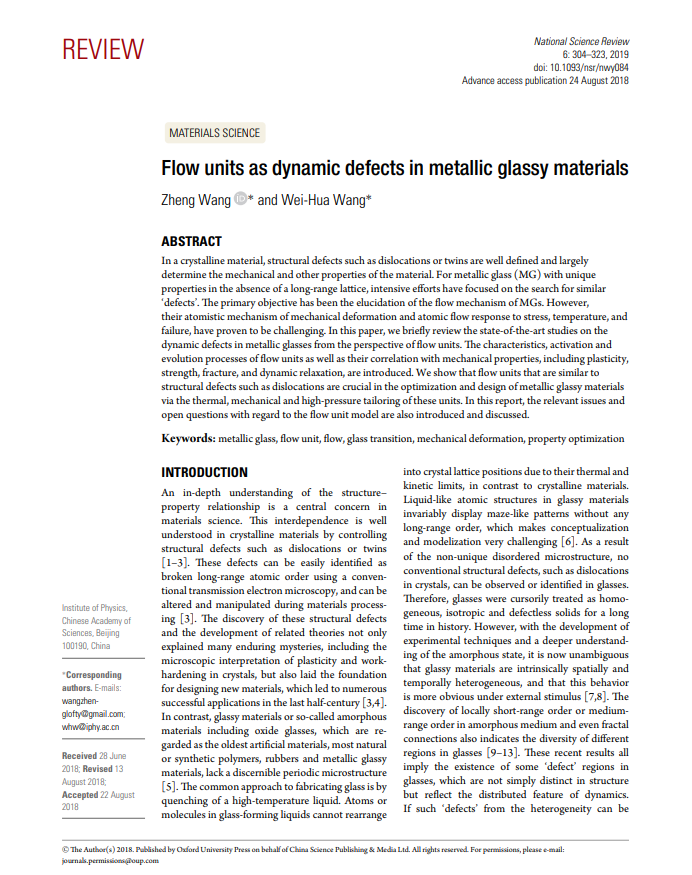In a crystalline material, structural defects such as dislocations or twins are well defined and largely determine the mechanical and other properties of the material. For metallic glass (MG) with unique properties in the absence of a long-range lattice, intensive efforts have focused on the search for similar ‘defects’. The primary objective has been the elucidation of the flow mechanism of MGs. However, their atomistic mechanism of mechanical deformation and atomic flow response to stress, temperature, and failure, have proven to be challenging. In this paper, we briefly review the state-of-the-art studies on the dynamic defects in metallic glasses from the perspective of flow units. The characteristics, activation and evolution processes of flow units as well as their correlation with mechanical properties, including plasticity, strength, fracture, and dynamic relaxation, are introduced. We show that flow units that are similar to structural defects such as dislocations are crucial in the optimization and design of metallic glassy materials via the thermal, mechanical and high-pressure tailoring of these units. In this report, the relevant issues and open questions with regard to the flow unit model are also introduced and discussed.
